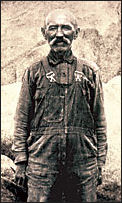Main Listing Page
The Lost Horse Mine
The Lost Horse Mine, was a mine that delivered more than 10,000 ounces of gold and 16,000 ounces of silver around 1894 and 1931. At one point when the tale of the Lost Horse Mine is told, it seems to be like an old wild west campfire story: weapon touting cowhands, cowboys rustlers, stallion criminals, the lure of gold, and a sticky-fingered mineworker.
As long-lasting William F. Keys, recounted the story, Johnny Lang and his dad drove their group of cows into the Lost Horse Valley in 1890, when there was "only cowboys and Indians." Johnny told Keys that they had moved west after his brother and six different other cowhands were gunned down in New Mexico.
One night, while camped outdoors in the Lost Horse Valley, the Langs' steeds vanished. Next morning Johnny followed the tracks to the McHaney brothers camp close to today's Keys Ranch. As indicated by local legend, the McHaney Gang were cattle rustlers and theives. Keys said they told Johnny his horses weren't there and to leave the area.
Keys goes ahead to say that Johnny got together with a man named "Dutch" Frank who recounted likewise being chased out by the McHaneys. He said that he had found a rich claim however was hesitant to prospect it. Johnny and his dad purchased the rights to the mine for $1000 and called it Lost Horse. To decrease the chance of being gunned down by the McHaney Gang or having his claims jumped, Johnny got together with three others. In the wake of recording their case, they set up a two-stamp plant and started preparing gold.
A well off farmer and rancher from Montana, J.D. Ryan, took over Johnny's mine in 1895. The following year he moved in a steam-controlled, ten-stamp process some place close to the Colorado River and had it disassembled and pulled to the mine site. To give steam to the plant, Ryan ran a two-inch pipeline 3.5 miles, from wells at his farm to an earth and stone supply close to the factory. Steam motors powered by wood from adjacent mountains were utilized to push the water up the 750 foot rise pick up where it was used to power the stamp plant. Warming the water at both the farm and the factory obliged a considerable measure of wood, and the aftereffects of the timbering can be seen today in the scantily vegetated slopes at both locales.
The hammering of the ten 850-pound stamps could be heard resounding over the valley 24 hours a day as the mineral was squashed. Water added to the squashed rock made a slurry, which washed over copper plates secured with a slight film of mercury. The gold particles clung to the mercury and the garbage washed away. The amalgam of mercury and gold was purified to discrete the two metals. The mercury could be reused and the gold was framed into blocks. These blocks were conveyed to Banning consistently, disguised in a 16-steed cargo wagon. The 130-mile excursion to convey the gold and come back with supplies took five days.
As the story goes, the day movement was delivering an amalgam the measure of a baseball while the night movement, managed by Lang, recuperated a minor golf ball. Ryan employed an investigator to research and found that when Johnny expelled the amalgam from the copper plates, he kept half for himself. Ryan gave Lang a decision: offer out or go to prison. Lang sold, then moved into an adjacent gorch where he kept on prospecting.
The Lost Horse Mine kept creating until 1905, when the mineworkers hit a shortcoming line and everlastingly lost the mineral bearing vein. The mine was rented to others or left torpid until 1931, when rising gold costs incited the preparing of 600 tons of tailings (natural pieces of extra mineral) with cyanide, delivering a couple of hundred ounces of gold.
Amid one of the mine's lethargic stages, Lang returned and set up home in the cookhouse. As indicated by Keys, Lang had concealed his stolen amalgam at the plant site and, not able to get to it before Ryan ran him off, had come back to recover his stash. Lang sold what Keys called "unadulterated gold bullion" on a few events amid this time. In the winter of 1925, debilitated and not able to exit for help, Johnny Lang passed on of presentation along Keys View Road. After two months, Keys discovered his body and covered him crosswise over from the frontage road to the mine.





